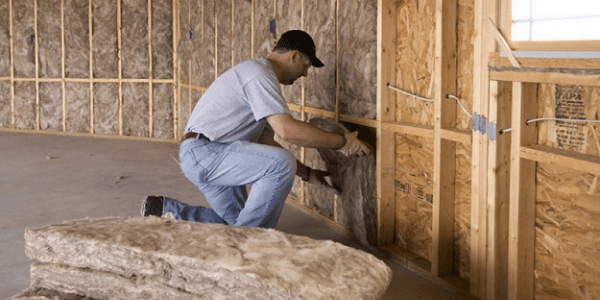
Insulation
(21,181 projects)
Insulation comes in many forms, shapes, materials, and efficiency ratings. There are thermal insulation products - those that reduce the loss or gain of heat - and there are acoustic insulation products - those that reduce noise. While some thermal insulation products may reduce the amount of noise and vice versa, most types of insulation fall under one category or the other (2). First, let's go over the most common types of thermal insulation.
Back to topThere are two types of spray foam insulation - open cell and closed cell. The main differences between the two are the density and structure. Open cell insulation has a soft, spongy structure because air fills the open space where the cells are. Closed cell insulation is much more dense - about four times more (3) - than open cell because the cells are completely encapsulated and filled in.
The most popular material for batt insulation is fiberglass, though it can also be made out of mineral wool, natural fibers, and even plastic fibers (5). It's one of the most budget-friendly and DIY-friendly insulation options available (6).
Usually made from cellulose (usually recycled newspapers) or fiberglass (glass that is spun into fibers (8)), blown-in insulation is blown into an area with a special piece of equipment. It is also incredibly budget-friendly and DIY-friendly.
If you have an unfinished attic, it's time to insulate it. An attic that is properly insulated could save you up to 50% on your energy bills (9). Attic insulation may seem unnecessary since no one is actually using that space, but keep in mind that heat rises and then escapes from an uninsulated attic. It's estimated that 25% of your heat loss could be from your attic (10). The cost for insulating your attic can be anywhere from $400-$1,700 and up depending on the material used, labor costs, and other factors. While it's usually a good idea to go for the best insulation you can afford, be sure to talk to a professional about what type of attic insulation will work best for you and your home.
Back to topAside from thermal insulation, there is also acoustic insulation. Most homes have some form of acoustic insulation, whether it's from the thermal insulation in the walls, the layout of the house, or the thickness of the walls and doors. However, if you find yourself able to hear the TV on the opposite side of the house or if you live next to a highway or busy road, you may want to invest in some soundproofing. There are a few different types of soundproofing products you can use to help dampen the sound in your home:
For professional soundproofing, the average cost is around $1,600 for one room. If you have a music studio in your home, it's well worth the price to keep everyone in the home and the neighborhood happy.
Back to topWhen considering any type of insulation, the topic of R-value is bound to arise. What is the R-value? It's a measure of thermal resistance - how resistant a material is to conductive heat flow (11). Simply put, the R-value tells how difficult it is for heat to pass through the material. Generally, the higher the R-value, the less heat can pass through the material. In terms of insulation, the R-value is a pretty key component in figuring out how well a type of insulation works. However it's not the only component. The density, location, and installation method are also key components in determining whether an insulation will work properly or not.
Back to top
Enter service and
zip code to view
cost breakdown